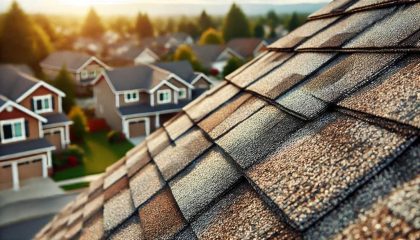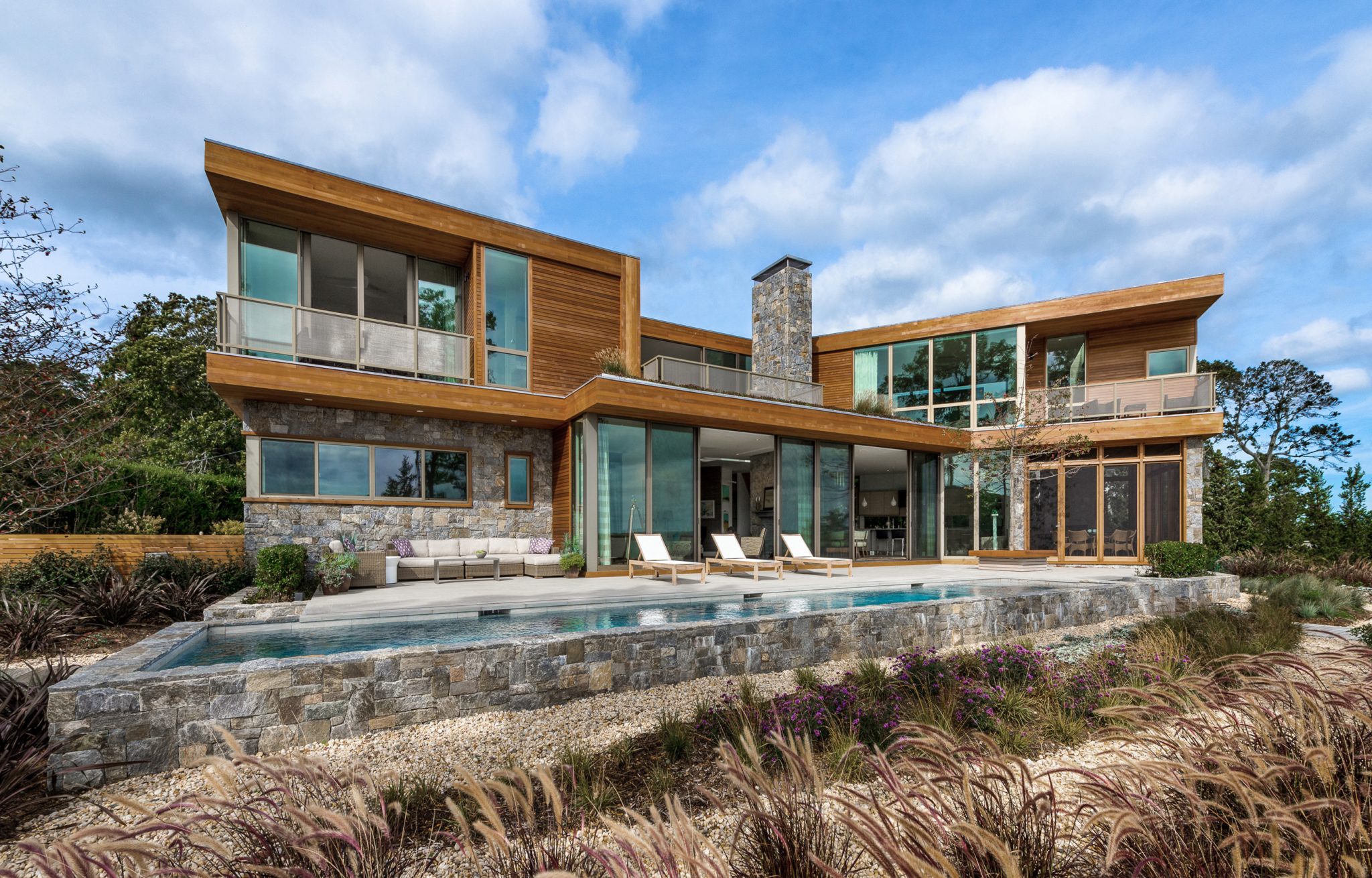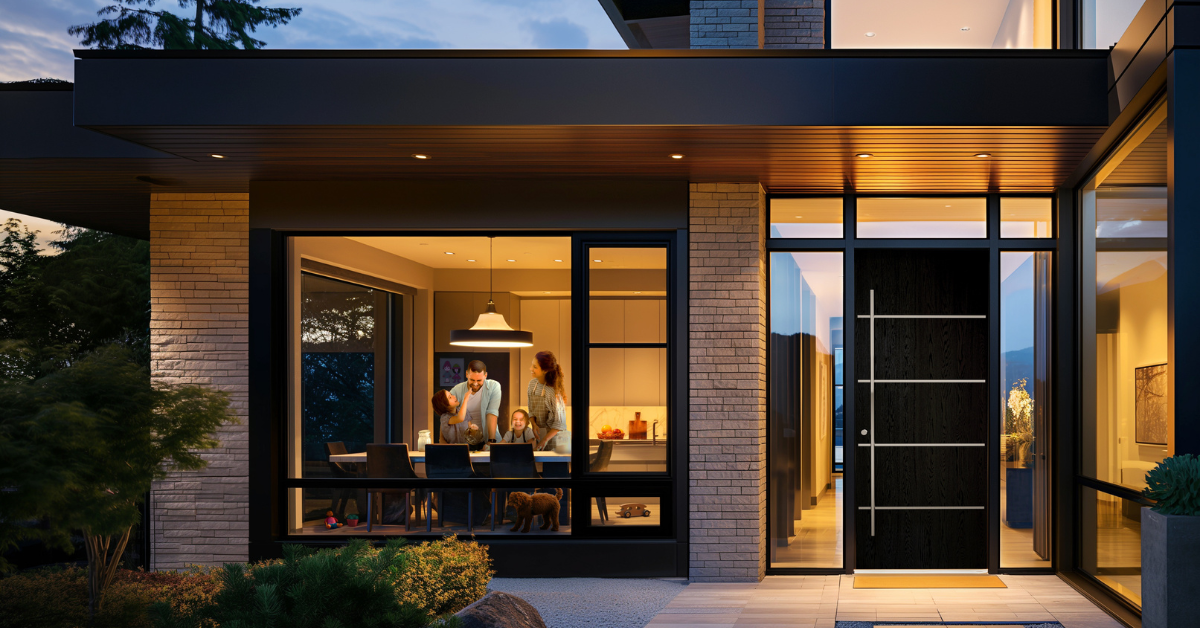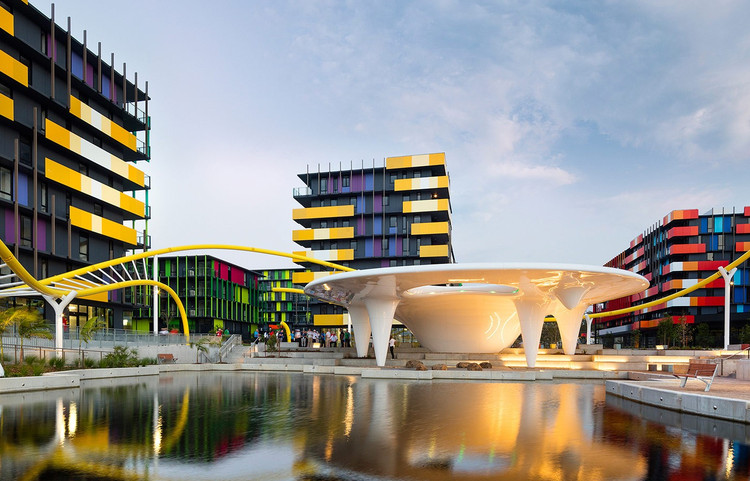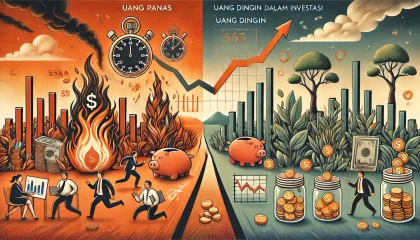The global construction industry is at the forefront of an eco-conscious revolution. One of the most significant changes involves the growing use of sustainable exterior materials. These materials are engineered to be durable, environmentally friendly, and visually appealing, making them an excellent investment for both homeowners and developers.
Choosing the right exterior materials is not only about aesthetics. It is also about long-term durability, reducing environmental impact, and creating energy-efficient living spaces. This article provides a deep dive into sustainable exterior materials, their benefits, examples of real-world products, and how they solve everyday construction challenges.
Understanding Sustainable Exterior Materials
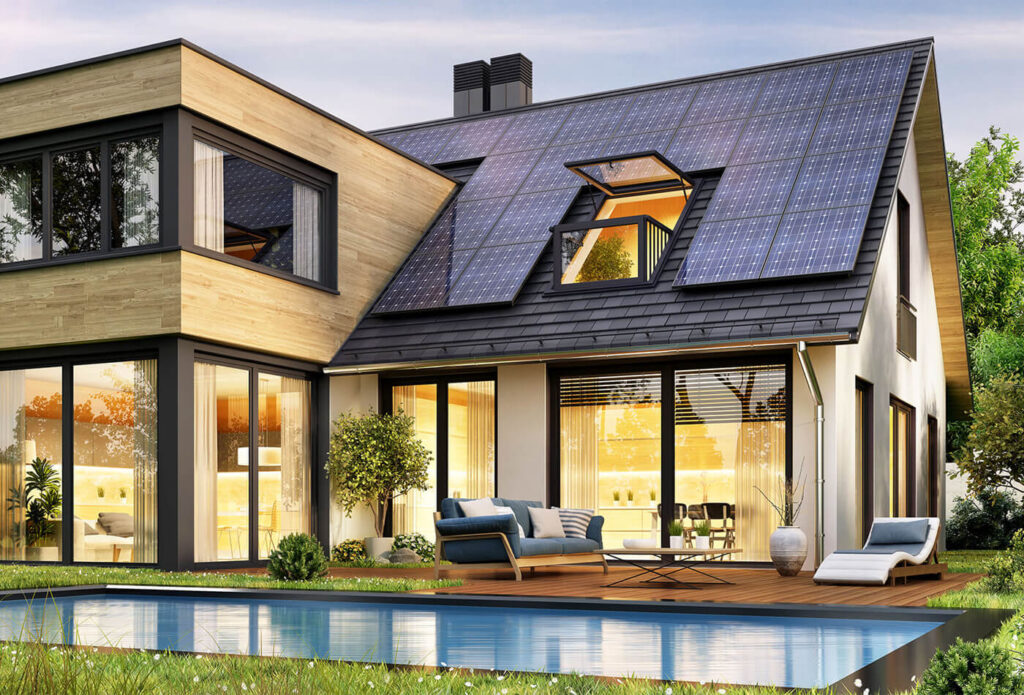
dropinblog.net
Sustainable exterior materials are building products created with minimal environmental impact, either through responsible sourcing, renewable resources, recyclability, or energy-efficient performance. Unlike traditional materials that contribute to pollution and waste, these solutions prioritize eco-friendliness without compromising strength or beauty.
Common examples include fiber-cement siding, reclaimed wood, recycled steel, bamboo, and solar-integrated roofing tiles.. Each of these materials contributes to reducing carbon emissions and energy use while offering the durability needed for long-lasting construction.
Sustainability in exteriors is not a passing trend. With stricter environmental standards and growing consumer awareness, eco-friendly exterior solutions are becoming the standard choice in modern construction.
Key Benefits of Sustainable Exterior Materials
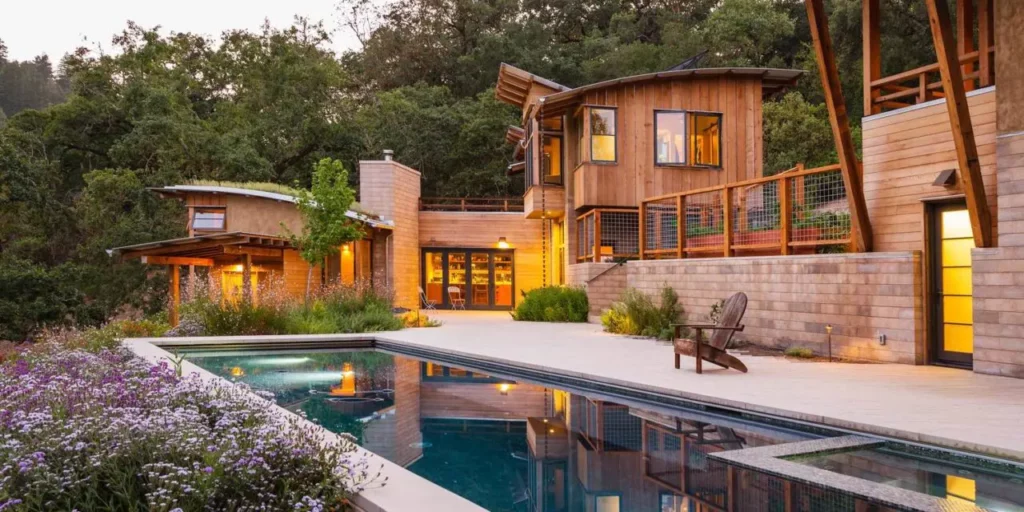
Elemental. green
Durability and Longevity
Many sustainable materials are designed to outlast traditional options. Fiber-cement siding, for instance, can endure for decades, resisting rot, pests, and weather-related wear. Recycled steel roofing can withstand fire, high winds, and corrosion better than most conventional products.
Energy Efficiency
Sustainable exteriors often provide superior insulation and temperature regulation. Insulated siding, cool roofing systems, and solar-integrated solutions significantly reduce heating and cooling costs. Over time, this contributes to major savings on utility bills and lowers greenhouse gas emissions.
Reduced Environmental Footprint
These materials are either recyclable, renewable, or require fewer resources to produce. By choosing them, homeowners and builders minimize landfill waste and reduce the strain on natural resources like forests and fossil fuels.
Design Versatility
Far from being limited in style, sustainable exterior materials come in a wide array of finishes, colors, and textures. Whether you want a modern, rustic, or traditional look, eco-friendly options can meet both design and sustainability requirements.
Higher Property Value
Green homes are increasingly in demand. Buyers see value in durability, energy savings, and eco-friendliness, which often translates into higher resale prices.
Real-World Examples of Sustainable Exterior Materials
James Hardie Fiber-Cement Siding
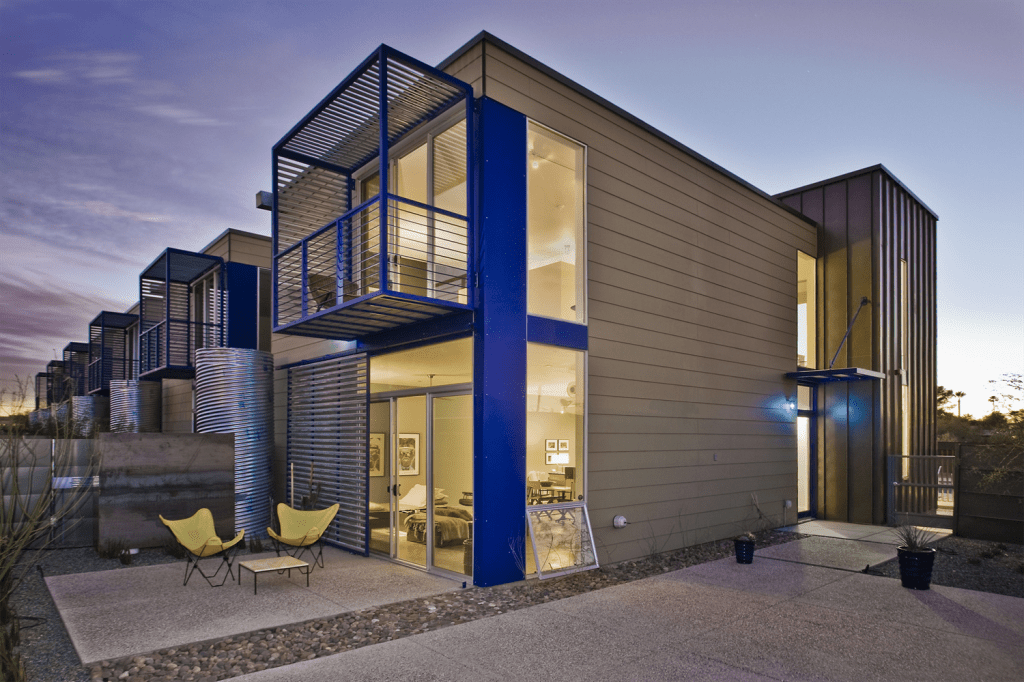
b2616803.smushcdn.com
James Hardie is one of the most recognized names in sustainable siding. Their fiber-cement siding is crafted from a mix of cement, sand, and cellulose fibers. This combination produces a product that is both extremely durable and resistant to damage from weather, pests, and fire.
The sustainability aspect comes from its long service life, meaning fewer replacements and less waste over time. In addition, the raw materials used in production are renewable, and the company emphasizes eco-friendly practices in manufacturing.
For homeowners, this siding offers the look of natural wood without the maintenance issues, making it both stylish and practical.
Tesla Solar Roof
Tesla has redefined roofing with its solar roof tiles. These innovative tiles function as both a durable roof and a source of renewable energy. Made from tempered glass, they are stronger than traditional shingles and designed to last for decades.
The sustainability advantage is clear: instead of simply covering your home, the roof actively generates clean energy. This reduces reliance on fossil fuels, cuts down utility costs, and contributes to a greener planet. Homeowners who invest in solar roofing gain both long-term energy independence and a future-proof property upgrade.
Kebony Modified Wood
Kebony offers an alternative to tropical hardwood by modifying sustainable softwoods using a bio-based treatment. The process strengthens the wood, making it resistant to decay, pests, and harsh weather conditions.
The eco-friendly benefit is that it avoids the need to harvest endangered hardwood species, helping preserve rainforests and biodiversity. Aesthetically, Kebony wood looks like premium timber, making it perfect for exterior cladding, decking, and siding.
This product is particularly valuable for architects and builders who want a natural wood finish without the environmental drawbacks of traditional hardwood.
Recycled Steel Roofing
Recycled steel is another popular sustainable exterior material. Steel roofing can last up to 70 years, far longer than asphalt shingles. It is resistant to fire, pests, and extreme weather conditions, making it one of the most durable options available.
Its sustainability comes from the fact that steel is infinitely recyclable without losing quality. Using recycled steel significantly reduces mining waste, energy consumption, and carbon emissions.
In addition, steel roofing reflects sunlight, which helps regulate indoor temperatures and further enhances energy efficiency.
Bamboo Exterior Panels
Bamboo is one of the fastest-growing plants in the world, making it an incredibly renewable material. Bamboo exterior panels are durable, flexible, and naturally resistant to pests and moisture when properly treated.
The environmental advantage is its rapid growth cycle, which allows for continuous harvesting without depleting resources. Bamboo panels bring a modern, sleek aesthetic while remaining an eco-conscious choice.
This material is especially useful in project.s that require both sustainability and a natural, stylish finish.
The Role of Technology in Sustainable Exterior Materials
Modern technology has significantly improved the performance and accessibility of sustainable materials. Advanced manufacturing techniques allow eco-friendly products to mimic the beauty of traditional ones while delivering superior durability. For example, fiber-cement siding uses precise engineering to replicate the look of natural wood without its weaknesses. Solar-integrated roofing tiles combine cutting-edge photovoltaic technology with strong tempered glass. Bio-based treatments for wood create products that are both sustainable and long-lasting.
These innovations ensure that sustainable materials are not only environmentally responsible but also high-performing and cost-effective over time.
Practical Use Cases: Problems Solved by Sustainable Exterior Materials
- Frequent Repairs and Maintenance
Traditional materials like untreated wood or asphalt shingles often require constant maintenance. Sustainable alternatives such as fiber-cement siding and recycled steel roofing last for decades with minimal upkeep. - High Energy Bills
Solar-integrated roofing and insulated exterior panels help maintain indoor temperatures, cutting down on heating and cooling costs. Over time, this results in significant savings. - Environmental Concerns
Materials like Kebony modified wood and bamboo panels reduce the need for deforestation, while recycled steel minimizes mining and energy use. - Limited Design Choices
Eco-friendly materials are available in a wide variety of styles, ensuring homeowners can achieve their desired look without compromising on sustainability.
Benefits of Using Sustainable Exterior Materials
The advantages extend beyond the environment and into the homeowner’s lifestyle and finances. Sustainable materials reduce the frequency of replacements, lower utility bills, and increase property value.
They also promote healthier living environments by reducing the use of toxic chemicals found in some traditional materials. For businesses, using sustainable exteriors can help meet regulatory requirements and improve brand reputation.
Ultimately, these materials represent an investment in long-term durability, financial savings, and environmental stewardship.
Buying Sustainable Exterior Materials
When purchasing sustainable exterior materials, buyers should focus on established manufacturers known for eco-friendly practices. Products like fiber-cement siding, solar-integrated roofing, modified wood, recycled steel, and bamboo panels are available through authorized distributors and construction suppliers.
Before buying, it’s important to evaluate the material’s lifespan, warranty, and environmental certifications. Many manufacturers also provide professional installation services, ensuring the product performs as intended.
Frequently Asked Questions
1. Are sustainable exterior materials more expensive upfront?
Yes, many sustainable materials come with a higher initial cost compared to traditional options. However, their durability, energy savings, and low maintenance often make them more affordable in the long run.
2. Can these materials perform well in extreme climates?
Absolutely. Products like fiber-cement siding, recycled steel roofing, and solar roof tiles are engineered to withstand harsh conditions such as heavy snow, strong winds, and high temperatures.
3. Do sustainable exterior materials improve property value?
Yes. Homes built with eco-friendly materials often attract buyers who value durability, lower energy bills, and environmental responsibility. This makes properties more appealing on the resale market.

